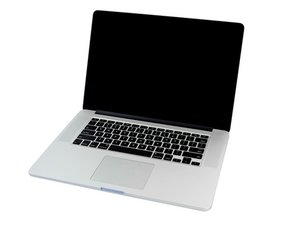CPU maxes out and charger + DC-in port/area gets hot when charging
Hi Guys,
First time poster, long time reader and user of the guides here - big fan and love your work so first and foremost, thank you for being such an amazing resource!
So my issue (and again apologies if this has already been posted and I’ve missed it):
My CPU maxes out (90-100%) and the machine is virtually unusable when the charger is plugged in and the battery is actually charging (but not once fully charged).
EDIT
Noticed the over heating and CPU issue doesn’t occur while charging when the external displays are disconnected… does this give any clues as to what the problem might be?
***
I use this machine at work (I’m in networking) every day. It’s usually plugged in to charger along with two external displays using thunderbolt to HDMI cables and for a 7yr old machine it’s a work horse! Leaves the brand new windows machines in the office for dead. Being a network engineer, I definitely put it through it’s paces - running multiple virtual machines, countless excel & word docs, a ridiculous number of chrome tabs along with various other background apps (one drive, google back up & sync, etc).
While I appreciate running that much would be detrimental to the performance of the machine, the fact is it handles the load perfectly fine when I’m at my desk and battery is fully charged. What bothers me is that the issue only presents itself when I take the laptop to a meeting etc, use it for a little while on battery and then start charging it back at my desk.
The basics:
- Macbook Pro 15” Retina Late 2013
- Mac OS Catalina 10.15.7
- 16GB DDR3 Ram
- 2.3GHz Quad Core i7
- GeForce GT 750M 2GB graphics.
Previous repairs/upgrades:
- DC port was getting unusually hot and noticed there was some charring on the pins of the port. Replaced this Mid 2018.
MacBook Pro 15" Retina Display Late 2013 MagSafe DC-In Board Replacement
- Battery replacement mid 2020
Remplacement de la batterie du MacBook Pro 15" Retina fin 2013
- SSD upgrade mid 2020
https://www.samsung.com/au/memory-storag...
https://www.aliexpress.com/item/32819641... (not exactly this listing - got the adapter from a friend but this is for your reference)
Machine is running a clean install after the SSD upgrade - only using 500gb (most of which are VMs). Have tried doing a SMC & PRAM reset. Regularly open up the bottom and remove dust from the main board, fans & air vents using an air gun.
Screenshots are below of the stats (using iStat Menus) - to be honest while I dabble in the “handyman” side of this stuff, I’m no expert when it comes to the technical stats so apologies if I’ve missed something obvious.
About:


On Battery Stats:








On Charge (very hard to take screenshots when CPU is at 98% so I’ve just taken the basics - let me know if you require additional):



Tutoriel
MacBook Pro 15" Retina Display Late 2013 MagSafe DC-In Board Replacement
Difficulté :
Modérée
—
1 - 3 hours

Tutoriel
Remplacement de la batterie du MacBook Pro 15" Retina fin 2013
Difficulté :
Très difficile
—
1 - 2 hours
Cette question est-elle utile ?

 2
2  1
1 
 970
970